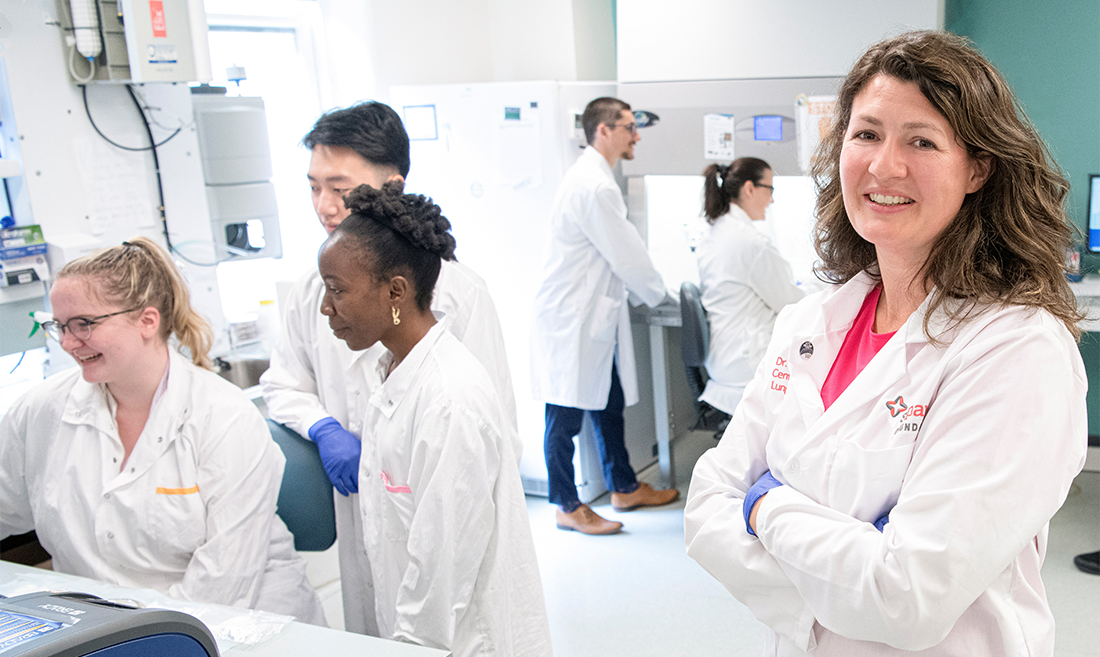
Dr. Tillie Hackett, right, with graduate students and technicians in her lab at the UBC Centre for Heart Lung Innovation at St. Paul’s Hospital.
By the time people are diagnosed with mild chronic obstructive pulmonary disease (COPD)—a condition that obstructs airflow in the lungs—more than 40 per cent of the smallest airways in their lungs are already destroyed.
Now, new UBC faculty of medicine research published in the American Journal of Respiratory and Critical Care Medicine, has identified the cells responsible for this small airway destruction. The findings reveal that patients with COPD experience a progressive loss of alveolar attachments that normally hold the small airways open.
“Airways are like flexible pipes that bring air in out of the lungs, and the alveolar are like cables that attach around the airway wall and hold it open,” says Dr. Tillie Hackett, a professor at the UBC Centre for Heart Lung Innovation at St. Paul’s Hospital and UBC’s department of anesthesiology, pharmacology and therapeutics. Without these attachments, the airways collapse and airflow is obstructed. This makes breathing difficult.
COPD is the third leading cause of death worldwide. Approximately 380 million people globally live with COPD, many of whom experience difficulty breathing each and every day. The disease is commonly associated with risk factors such as smoking, exposure to air pollution and genetic predisposition.

Dr. Steven Booth
Using lung tissue samples donated by 40 COPD patients to the lung biobank at St. Paul’s Hospital, Dr. Hackett and her team performed high-resolution imaging studies to investigate small airway disease at the single-cell level.
“By using these imaging techniques, we have been able to identify the specific cell types involved in the inflammatory response that destroys the small airways,” says Dr. Steven Booth, a postdoctoral fellow in Dr. Hackett’s lab and the first author of the study.
The authors created a single-cell “atlas” of COPD small airways using imaging mass spectrometry. The technique allows the researchers to study every cell within a disease lesion, where as previously researchers could only look at one cell at a time. Dr. Booth says this technology enables researchers to create a map of a disease lesion to understand which cells are causing the damage.
For Dr. Hackett, also a Tier I Canada Research Chair in Asthma and COPD, understanding the cells involved in small airway loss can lead to more effective treatments for COPD patients.
“This is the closest we have come to finding a way to potentially prevent COPD,” says Dr Hackett.
This research was supported by the St. Paul’s Foundation and the Canada Foundation for Innovation.
A version of this story was originally published on Providence Health Care.